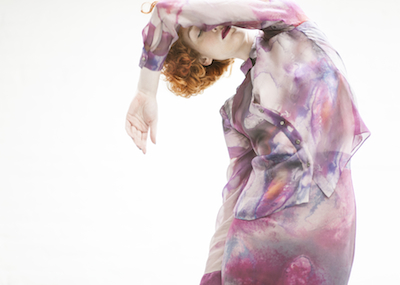Up and coming women’s wear brand Aether is building its business on stylish, digitally-printed garments, each of which will sell for hundreds of pounds. It has been impressed with what digital can do.
Digital printing and the high fashion of the Paris catwalk are not, you would think, the most natural of bedfellows, but they are becoming increasingly so through the efforts of companies such as Aether Studios.
The London and Stockholm designer women’s wear label is one of a breed of fashion brands that is taking advantage of the special characteristics of digital textile printing to create small but stylish collections of garments in mostly cotton and silk that score points for sustainability along the way.
Venezuelan-born duo Neliana Fuenmayor, a fashion designer, and Paula Maso, a graphic designer and photographer, set up the company after meeting at the London College of Fashion, where both gained their degrees. Having graduated in 2009, Ms Fuenmayor did some work with Stella McCartney, was a design assistant and trend forecaster at Central Saint Martins College of Arts and Design, and did a big consultancy job as a head designer for another London fashion house, before the plans for Aether came together.
‘We wanted to create our own styles and give it a go. We both have entrepreneurial personalities,’ she explained. ‘Paula was in Barcelona for a year and did a course on digital printing, so I said yes, maybe this is a way we can collaborate. Digital textile was totally new to me; we just Googled companies in the UK and asked for samples. It was completely from scratch.’
Together, they have so far created two collections, the second of which (Spring/Summer 2015) was being launched in Stockholm with a Paris show to come as Digital Printer visited the company at its studio near Hackney Downs. The fabrics used are purely natural fibres, cottons and silks of different kinds, with garments fetching up to £600 each.
Ms Fuenmayor is not an experienced print buyer of any kind, let alone textiles, but she knows what she wants and she has been very happy with the service from Aether’s main digital textile print supplier in the UK, which is The Silk Bureau in Evesham, Worcestershire.
She said: ‘We want to keep our printing here in the UK. We’ve been very happy with that. We researched other countries in the EU and the prices are not dramatically different, but we are very happy with the lead times our supplier gives us. In two weeks The Silk Bureau can deliver a fabric.
‘We are also a transparent company, which is a new approach to sharing information with customers. For us, it means trying to be as sustainable and ethical as possible, and digital printing gives us a great opportunity to do that because usually fashion designers need to order fabrics in bulk, and they might end up with a lot of wastage. We engineer our prints, which allows us to control the fabric wastage. We can also have as many colour ways (ie alternative colour choices for the same design) as we want, and that has allowed us to look bigger and to offer a wider range of prints.’
It has not all been plain sailing. Aether has run into issues with a 280 gsm cotton jumper material that has not been printing well enough for a high end label (this garment is not, by the way, printed by The Silk Bureau), and Ms Fuenmayor is waiting on some enquiries she has put out into the industry to find the right digital print supplier for these garments.
She has also been frustrated by there being no UK printer she has yet found that is using GOTS (Global Organic Textile Standard) inks. ‘Our printer said they would love to use them but it takes time and money. I’m really interested in sustainability and I think the future is transparency and companies adapting to new regulations. One reason that we love digital print is that the ink consumption and water usage is very low,’ she said.
Asked what she looked for in a print supplier, Ms Fuenmayor specified lead times and quality as being very important, adding: ‘A supplier that recognises when something is not well printed, and thinks ahead of our necessities also; that knows it’s not just got to be printed but cut and sewn too, and we have to book our slots in the production unit. We really need to count on the printer.’
Overall, she has been very impressed with digital textile printing though, saying: ‘As a designer, I had never worked with digital print before, and it has been just a really great experience that has allowed us to be more creative.’





